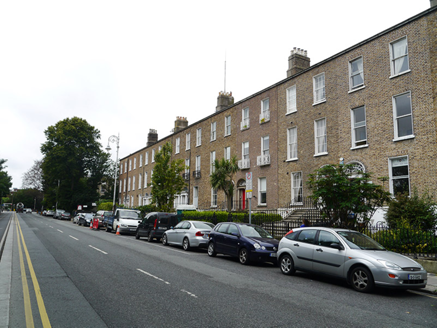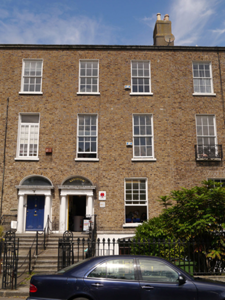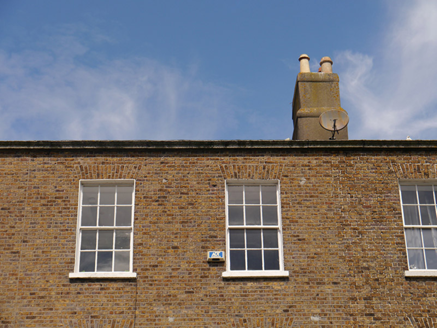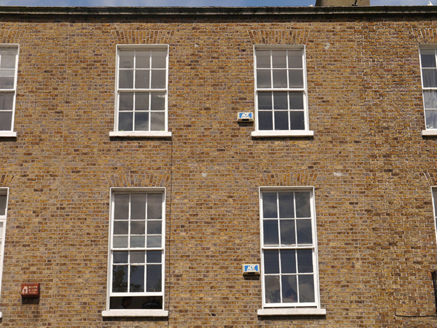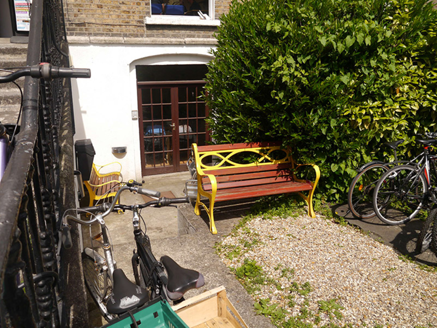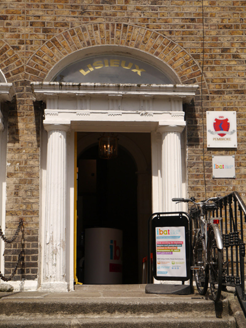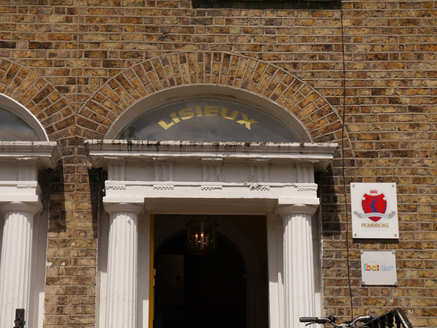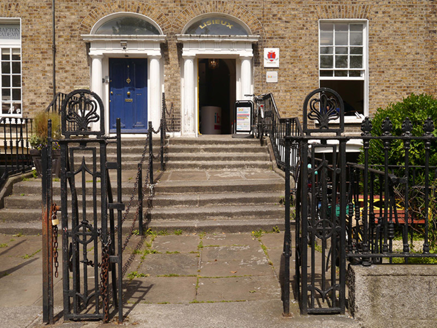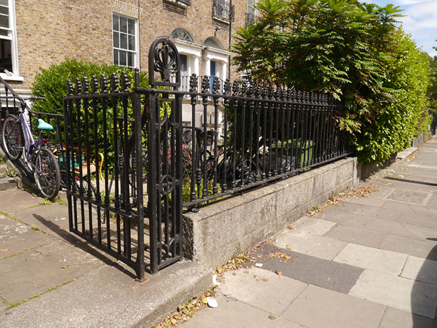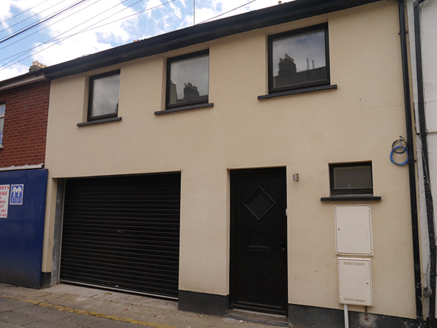Survey Data
Reg No
50100686
Rating
Regional
Categories of Special Interest
Architectural, Artistic
Original Use
House
In Use As
Office
Date
1795 - 1835
Coordinates
316990, 233086
Date Recorded
21/06/2016
Date Updated
--/--/--
Description
Attached two-bay three-storey house over raised basement, built c. 1815 as one of twelve (Nos. 4-15) within longer row of similar houses, and rear having four-storey flat-roofed return to south end and fire escape to north end. Now in use as offices. M-profile roof, hipped to south end, having brick parapet with moulded granite coping, shouldered rendered chimneystacks to north party wall with clay pots, and concealed rainwater goods. Flemish bond buff brick walling on granite plinth course over rendered basement; rendered walling to rear. Square-headed window openings with painted rendered reveals, painted granite sills; and with rendered surround to basement opening set in segmental-headed recess. Six-over-six pane timber sliding sash windows, having simple horns to top floor and lacking horns to lower floors; recent timber glazed French doors to basement. Rear has six-over-six pane timber sash windows to top floors, with round-headed window to south bay. Elliptical-headed door opening with rendered reveals, painted stone Greek Doric doorcase with triglyphs, guttae and metopes to entablature, plain fanlight and bolection-moulded twin-panel timber door with replacement brass furniture. Shared sandstone-paved entrance platform with two stages of four and four granite steps flanked by cast-iron railings on granite plinth. Plainly detailed doorway beneath entrance platform. Street boundary has single granite step and decorative cast-iron railings over moulded granite plinth, with matching pedestrian gate on decorative round-headed cast-iron piers. Yard to rear of plot, with remodelled or rebuilt two-storey mews building to lane.
Appraisal
No. 7 Herbert Place forms part of a long, cohesive late Georgian terrace of brick houses that are set back from the Grand Canal above high exposed basements. The historic form and architectural character of the group are largely well retained, with the main elevations displaying elegant proportions that are enlivened through the restrained Greek Revival detailing of the stone doorcases and setting features. Retaining a good Greek Doric doorcase, original façade proportions and setting features, No. 7 forms part of a historic streetscape lining the west bank of the Grand Canal, and contributes to the wider Georgian core of south Dublin. Although many mews buildings are modernized, including that to No. 7, the overall form of the row on Herbert Lane remains intact. Built as a southward continuation of Warrington Place, this stretch of the street was renamed following the accession of Sidney Herbert to his father's estates in 1827.
